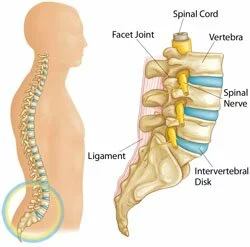How to Manage Slip Disks in Back Pain
Slip disks is a problem that causes back pain, yet it is one of the many variants as to why back pain starts. Once doctors decide is a disk is slipped they often assign management schemes to the patient. It is important that the patient follow the instructions, otherwise the pain could get worse. Your doctor will provide you systematic instructions if you are diagnosed with back pain, such as slip disks.
How to manage:
Doctors often order back and skin care, such as massage therapy and so on. You can purchase back mats with massagers cheap, as well as sauna foot tubs. Doctors also recommend bed rest, as well as alignment of the entire body. You can learn stretch exercises, which work amazingly to relieve pain. If the disks are causing dramatic pain, doctors may include logrolling strategies ever couple of hours. If you continue treatment in office, doctors will monitor your records and order laboratory tests, such as I/O, VS, and UO. TENS is ìtranscutaneous electrical nerveî stimulations, which is often ordered as well.
Patients with back pain often set up with diets, orthopedic treatments, meds, and so on. Antacids are recommended for many patients, which include Aluminum hydroxide gels (Gelusil) and Maalox, which are magnesium and/or aluminum based.
Once you are diagnosed with slip disk or herniated nucleus pulposa you will need to continue treatment, including medical administration and nursing interventions. The strategies are set up under doctorís orders, which vary from patient to patient.
Often doctors will prescribe NAID, which include painkillers such as Indomethacin, Dolobid, Motrin, Clinoril, Ibuprofen, Ansaid, Feldene, etc. Flexeril and valiums are prescribed to relax the muscles.
Doctors will use chemonucleolysis combined with chymopapain treatment as well, or discase. Chemonucleolysis is the process of breaking down ìdisk pulpî by using enzymes, which are injected into the ìpulpy materialî of a certain ìintervertebral disk.î The purpose is to liquefy and decrease pressure on neighboring ìnerve rootsî in slip disks. Chymopapain is obviously enzymes from papaya, which is found in juices. The mission is to breakdown proteins. The treatment works alongside common management schemes, such as bed rest, hot pads, stretch exercises, moisture, and hot compressors.
Various other treatments and management schemes are set up otherwise potential complications could arise. The complications include urine retention, infections of the upper respiratory, urinary tract infections, muscle degeneration or atrophy, chronic back pain, thrombophlebitis, progressive paralysis, and so on.
Thrombophlebitis is inflammation of the veins, which formulate blood clots. If complications arise, doctors may consider surgical procedures to intervene. The interventions may include microdiskectomy, spinal fusion, percutaneous lateral diskectomy, laminectomy, etc.
Laminectomy is the process of surgically excision the vertebral posterior arch. The patient is administered fluids through I.V. as well as related treatment such as ROM exercises, which are done prior to and after back surgery. Isometric exercises are commonly ordered when back pain is present. Spinal fusions are described as stabilizations of the ìspinousî progressions along with the ìbone chipsî of the ilium and its surroundings, or iliac crest. Harrington rods of metallic implants are potentials as well and describe spinal fusions.
In addition to slip disks, back pain may arise from fractures, which may emerge from trauma, aging, osteoporosis, steroid therapy, multiple myeloma, osteomyelitis, bone tumors, Cushing syndrome, immobility, malnutrition, and so on. Fractures are defined in many ways, which include compression, avulsion, simple, etc.
One thing for sure, when it comes to back pain one must take measures to prevent further complications, since back pain is one of the worst possible pains one can endure.

